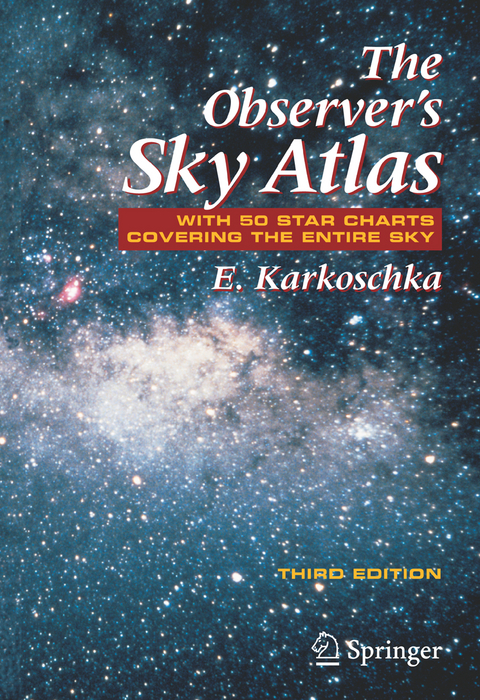The Observer's Sky Atlas
With 50 Star Charts Covering the Entire Sky
Seiten
2007
|
3rd ed. 2007
Springer-Verlag New York Inc.
978-0-387-48537-9 (ISBN)
Springer-Verlag New York Inc.
978-0-387-48537-9 (ISBN)
Zu diesem Artikel existiert eine Nachauflage
Look at the Milky Way through binoculars and it will reveal its many hundreds of thousands of stars, double stars, stellar clusters, and nebulae. Sky Atlases Most sky atlases can be classi?ed into one of two major groups according to the number of stars they contain.
Can you remember being impressed by a clear starry sky? Look at the Milky Way through binoculars and it will reveal its many hundreds of thousands of stars, double stars, stellar clusters, and nebulae. If you are a new observer, it is not that easy to ?nd your way in this swarm of stars, but this atlas tries to make it as easy as possible. So now it is not just experienced amateurs that can enjoy looking at the heavens. Two additional observing aids are recommended. The ?rst is a planisphere, where one can dial in the time and day in order to see which constellations are visible and where they are in the sky. The second is an astronomical yearbook listing the current positions of the planets and all important phenomena. So, let us begin our journey around the night sky, and see what the universe can reveal to us! Sky Atlases Most sky atlases can be classi?ed into one of two major groups according to the number of stars they contain. Some atlases only show the stars visible to the nakedeye. As there are not more than a few thousand such stars, such charts can be simple and clear and can be arranged in a handy format. They are ideal for all naked-eye Facing page, top: The constellation Cygnus (Swan) in the midst of the northern Milky Way.
Can you remember being impressed by a clear starry sky? Look at the Milky Way through binoculars and it will reveal its many hundreds of thousands of stars, double stars, stellar clusters, and nebulae. If you are a new observer, it is not that easy to ?nd your way in this swarm of stars, but this atlas tries to make it as easy as possible. So now it is not just experienced amateurs that can enjoy looking at the heavens. Two additional observing aids are recommended. The ?rst is a planisphere, where one can dial in the time and day in order to see which constellations are visible and where they are in the sky. The second is an astronomical yearbook listing the current positions of the planets and all important phenomena. So, let us begin our journey around the night sky, and see what the universe can reveal to us! Sky Atlases Most sky atlases can be classi?ed into one of two major groups according to the number of stars they contain. Some atlases only show the stars visible to the nakedeye. As there are not more than a few thousand such stars, such charts can be simple and clear and can be arranged in a handy format. They are ideal for all naked-eye Facing page, top: The constellation Cygnus (Swan) in the midst of the northern Milky Way.
Explanatory Notes.- Star Charts and Catalog.- Appendices: Brightest Stars; Meteor Showers; Calendar 2004-2022; Nebula Numbers; Nebula Names; Star Names; Constellations; Glossary; Mean and Extreme Values.- Index of Figures and Tables.
| Zusatzinfo | VI, 165 p. |
|---|---|
| Verlagsort | New York, NY |
| Sprache | englisch |
| Maße | 140 x 216 mm |
| Themenwelt | Sachbuch/Ratgeber ► Natur / Technik ► Weltraum / Astronomie |
| Naturwissenschaften ► Physik / Astronomie ► Astronomie / Astrophysik | |
| ISBN-10 | 0-387-48537-6 / 0387485376 |
| ISBN-13 | 978-0-387-48537-9 / 9780387485379 |
| Zustand | Neuware |
| Haben Sie eine Frage zum Produkt? |
Mehr entdecken
aus dem Bereich
aus dem Bereich
Perspektiven auf die Menschheit
Buch | Hardcover (2024)
Klett-Cotta (Verlag)
25,00 €
auf der Suche nach neuen Planeten und außerirdischem Leben
Buch | Hardcover (2024)
Droemer (Verlag)
24,00 €





